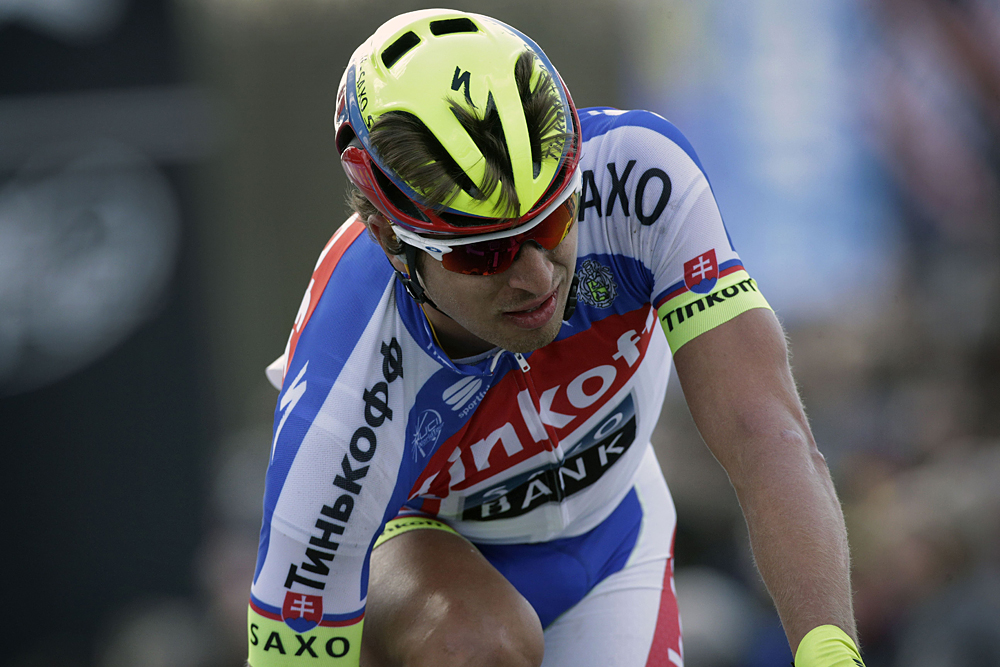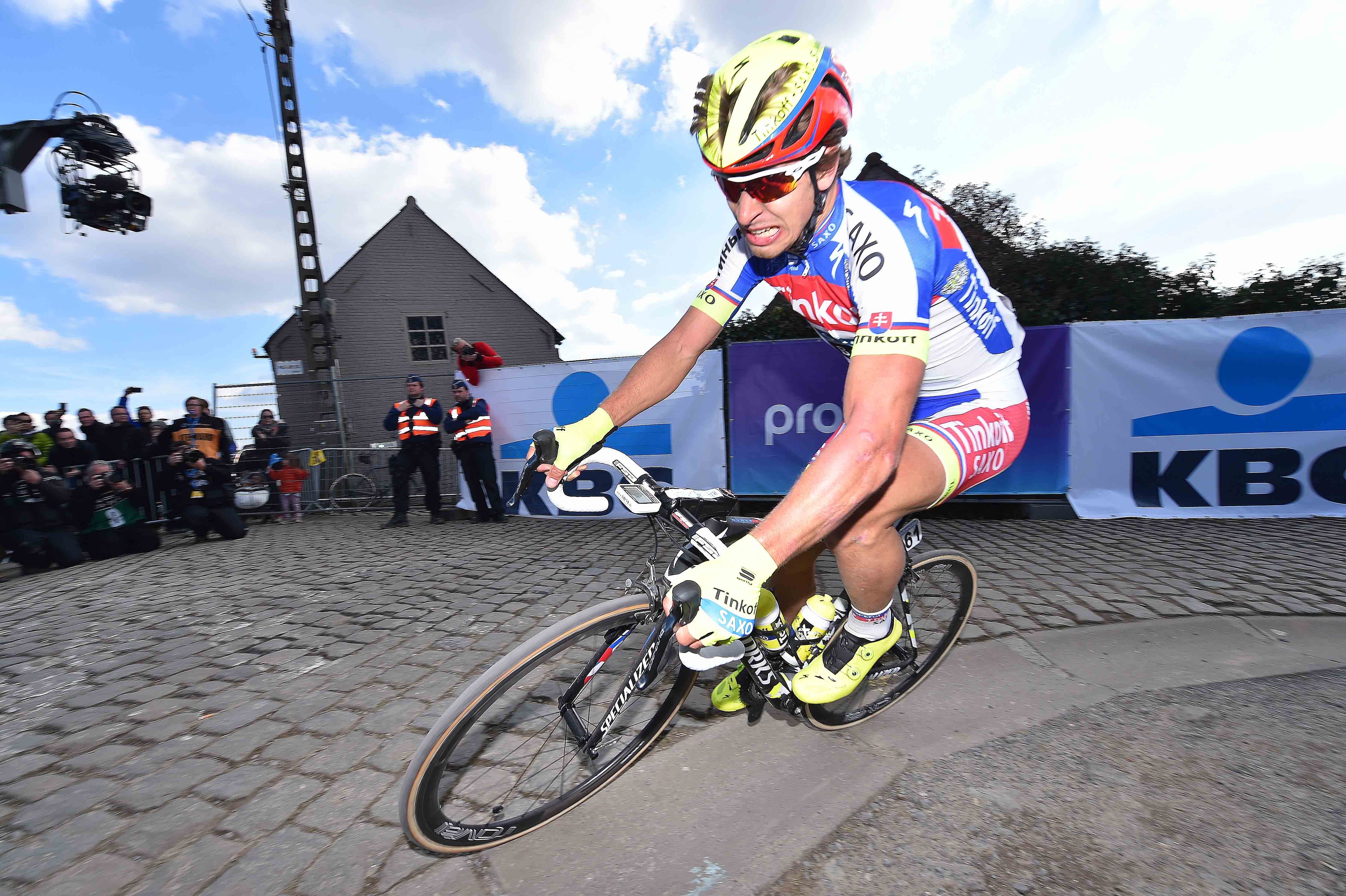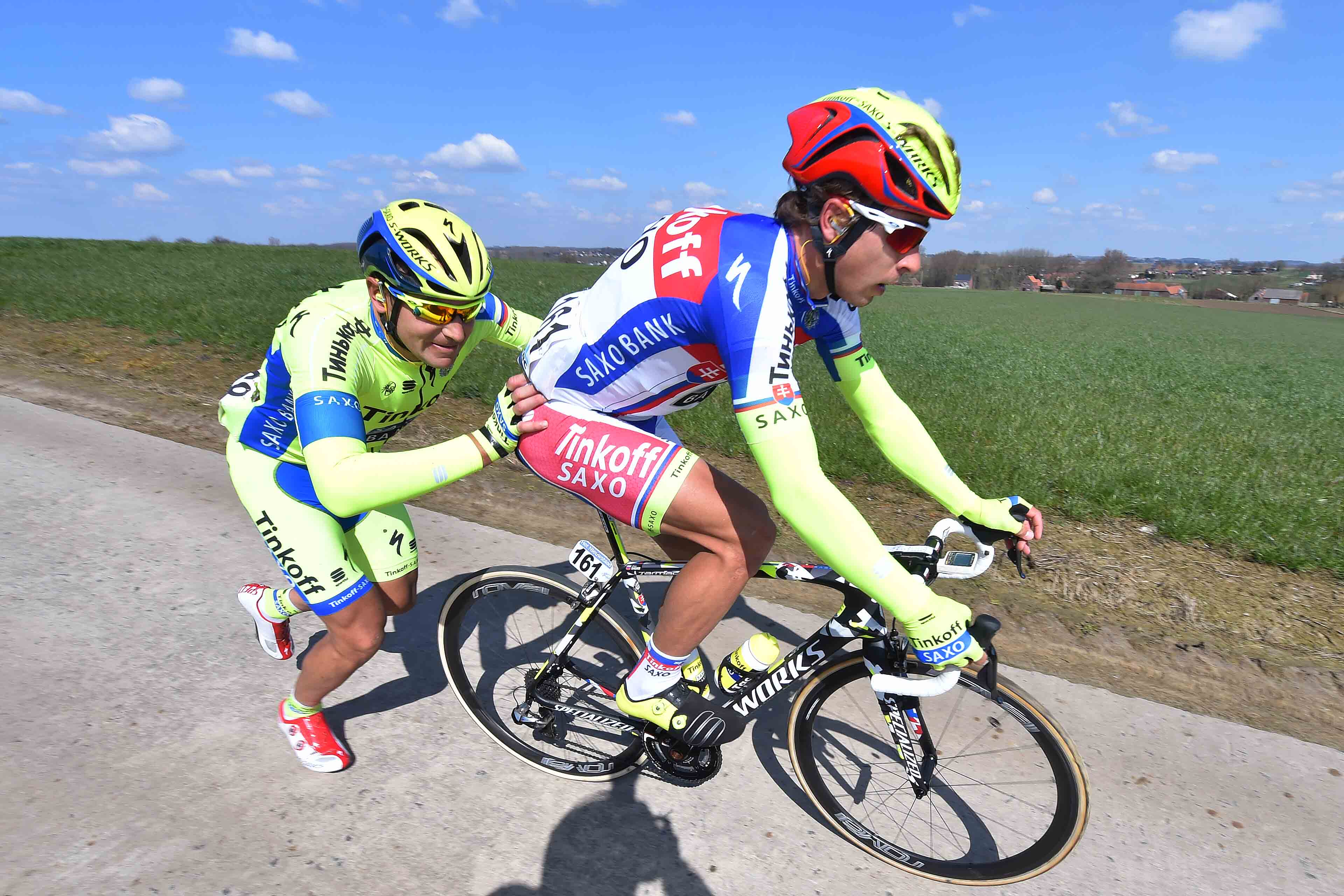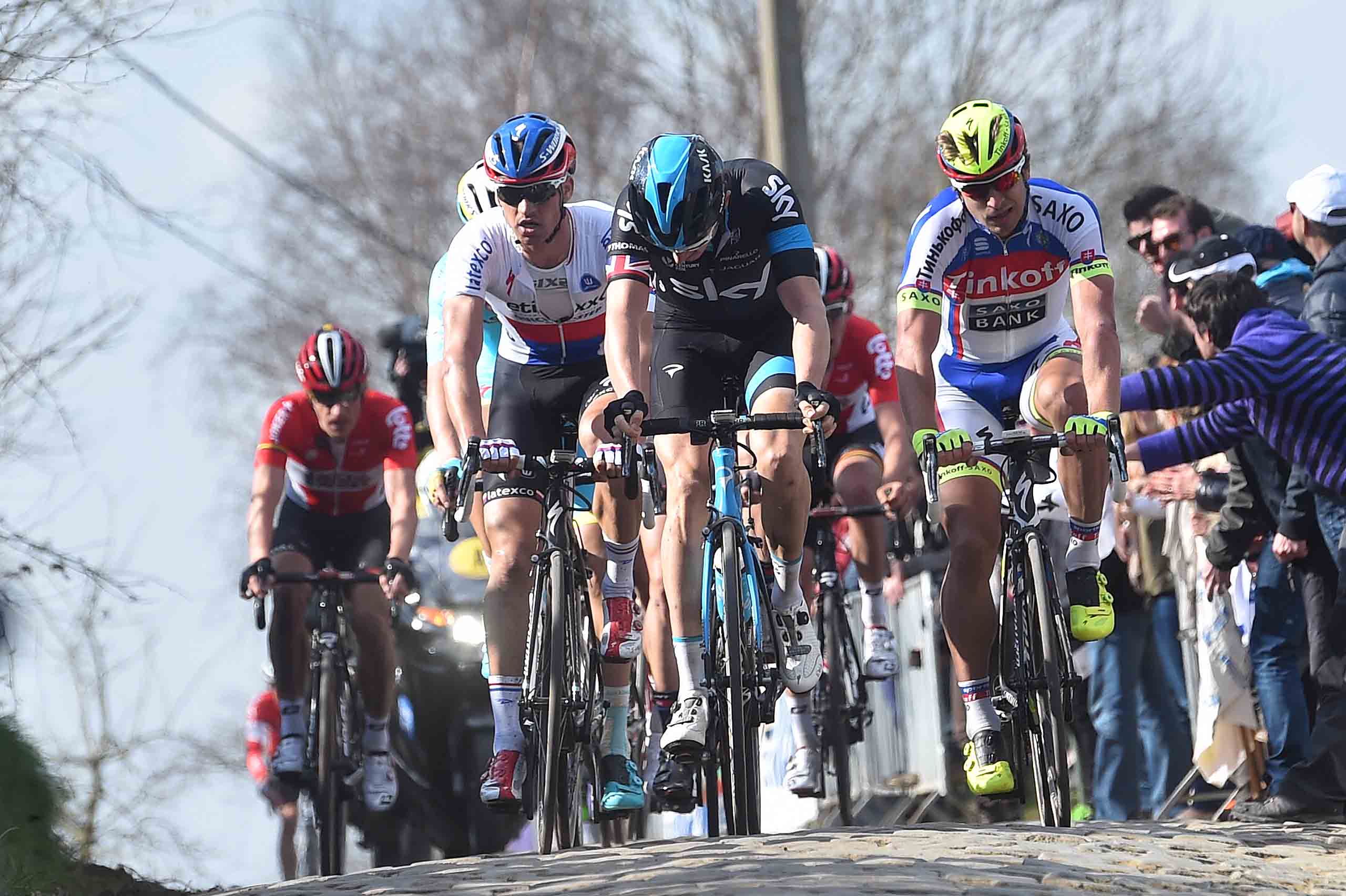Sagan falls short again in Tour of Flanders finale
Tinkoff-Saxo man has to settle for fourth after chasing with Van Avermaet





Another week, another Classic and another Peter Sagan conundrum. As at Milan-San Remo and E3 Harelbeke, the Tinkoff-Saxo man impressed on the final climb at the Tour of Flanders but then baffled by again losing his way at the death.
With eventual Alexander Kristoff (Katusha) and Niki Terpstra (Katusha) already up the road, Sagan and Greg Van Avermaet (BMC) proved the strongest of the chasers on the Paterberg, cresting the summit with 25 seconds to make up.
Finding common cause on the flat, exposed run-in to Oudenaarde, Sagan and Van Avermaet’s working alliance saw them peg back the deficit to just 10 seconds at one point, but Kristoff’s strength and Terpstra’s reluctant agreement to collaborate with him meant that they would draw no closer as a tandem.
Then, on the long finishing straight, when Van Avermaet climbed out of the saddle to make one final, forlorn effort, he turned and saw that Sagan was no longer on his wheel, the Tinkoff-Saxo man simply unable to follow.
While Van Avermaet was ushered immediately towards the television interview tent ahead of the podium ceremonies, the fourth-placed Sagan wheeled disconsolately across the finish line where his soigneur was waiting for him.
After rolling to a halt, Sagan leant over his handlebars coughing for a minute before he was gently sent on his way again to soft-pedal towards the buses in the main square 500 metres further along the road, seemingly oblivious to a pat of consolation from Filippo Pozzato (Lampre-Merida) as he ambled past. On reaching the sanctuary of the team bus, Sagan opted not to re-emerge, and instead it was left to directeurs sportifs Lars Michaelsen and Tristan Hoffman to speak to reporters on his behalf.
“The two guys [Kristoff and Terpstra – ed.] went away on the Kruisberg but we gambled that the gap wouldn’t be too big by the last time up the Oude Kwaremont,” Hoffman told Cyclingnews. “In the end, the gap was 30 seconds, which was maybe too big but you can’t change that. In any case, he tried there with a little group and then he really tried to get across on Paterberg with Van Avermaet. They closed to about 15 seconds but I think that was the maximum we could get out of him today.”
Get The Leadout Newsletter
The latest race content, interviews, features, reviews and expert buying guides, direct to your inbox!
Sagan’s apparently sudden loss of power ahead of the sprint for third place bore a heavy resemblance to his collapse in the finale of E3 Harelbeke last week. To paraphrase a rather more loquacious man than Sagan: to run out of energy in the finale in once may be regarded as a misfortune; to do it twice looks like carelessness.
As at Harelbeke, however, Hoffman said that it was a not a case of the hunger knock. “The last part he missed it again, he got empty again,” he said. “He said he’d eaten and drunk enough but he missed the last part. I don’t know why that is or how come.
“But what can I say? I think the two guys in front were very strong and they were good together. I had been hoping that maybe Niki wouldn’t want to work with Kristoff. Peter really tried, he went for the victory because he gambled to jump across and he didn’t succeed. But fourth place, with the legs he has at the moment, I think it’s the maximum.”
To subscribe to the Cyclingnews video channel, click here
Sagan’s fourth place is, of course, an improvement on his lacklustre Ronde showing of a year ago, but after arriving in the professional peloton five years ago seemingly already fully formed, the Slovak’s career is, fairly or not, seemingly measured by a rather different metric to most other 25 year olds.
Two years ago, after all, he was the only man to come close to living with an otherworldly Fabian Cancellara in Flanders. Sagan has now been riding without his effervescence of old for the bones of a year, however, and the switch from Cannondale to Tinkoff-Saxo in the off-season has not yet brought a remedy.
“He hadn’t won since July but he won a stage at Tirreno-Adriatico and he’s getting there,” Hoffman said. “In E3 he was up there. He was up there in Gent-Wevelgem but he missed the break. He was up there today too, but he just missed the legs in the last bit. I hope he keeps fighting for that.”
In 2014, Sagan responded to his disappointing Tour of Flanders with a defiant and attacking display at Paris-Roubaix, and though he ended the day off the podium, it seemed at the time to signal an upturn in his fortunes at the end of a mixed spring. Tinkoff-Saxo will hope for similar, or better, this time around. “We’re going to give everything in Roubaix and see what we do,” Hoffman said optimistically. “I hope he improves his condition a little bit and he can go far.”

Barry Ryan was Head of Features at Cyclingnews. He has covered professional cycling since 2010, reporting from the Tour de France, Giro d’Italia and events from Argentina to Japan. His writing has appeared in The Independent, Procycling and Cycling Plus. He is the author of The Ascent: Sean Kelly, Stephen Roche and the Rise of Irish Cycling’s Golden Generation, published by Gill Books.